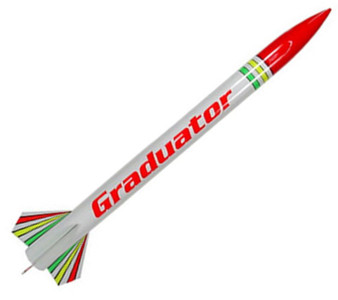LOC Precision Flying Model Rocket Kit 2.63" Patriot LOC YPAT25
Assembly Required
Pre-Slotted Airframe for Through-the-wall Fin Construction
34" Tall Scale Kit
29mm Heavy Duty Motor Mount
Heavy Duty 1/8″ Laser Cut Fins
Laser Cut 1/8 Center Rings
18″ Rip-Stop Nylon Parachute
Starter Fire Blanket
Rail Guides
10″ Payload Section
Shock Cord and all necessary hardware to keep it together!
Polypropylene Nose Cones
Vinyl Decals
Instructions
Made in the USA
Stable on D-F power
Larger motors will upset the balance of this rocket kit and nose weight may be necessary!
Skill Level Pro Entry
Specifications:
Length: 34"
Diameter: 2.63"
Weight: 15oz
Recommended Engines:
29mm
Use adapter down to 24mm motors
D15-4 250'
E20-7 875'
F24-8 1000'
G64-11 2600'
Model Rocket Kits are rated by Skill Level
1 Beginner
2 Intermediate
3 Advanced
4 Expert
5 Master
If you are just starting in the hobby start at the beginner level and move up from there at your own pace.
What is needed to build and fly
All model rockets come in kit form that require assembly. The materials are primarily cardboard tubes, balsa or plastic fins and nose cone. Materials will vary by model and are typically specified in the description of each kit.
Additional supplies will be necessary to build and finish your model rocket kit and may include:
Scissors, Hobby Knife
Ruler
Wood Glue, Model Cement or CA(Super Glue)
Sandpaper
Masking Tape
Finishing Supplies like:
Wood Filler
Sealer/Primer
Paint
Launching Equipment and Supplies like:
Recovery wadding
Launch Pad
Launch Controller
Power supply
Model Rocket Motors and Igniters
A safe place to fly using guidelines from the National Association of Rocketry Safety Code









